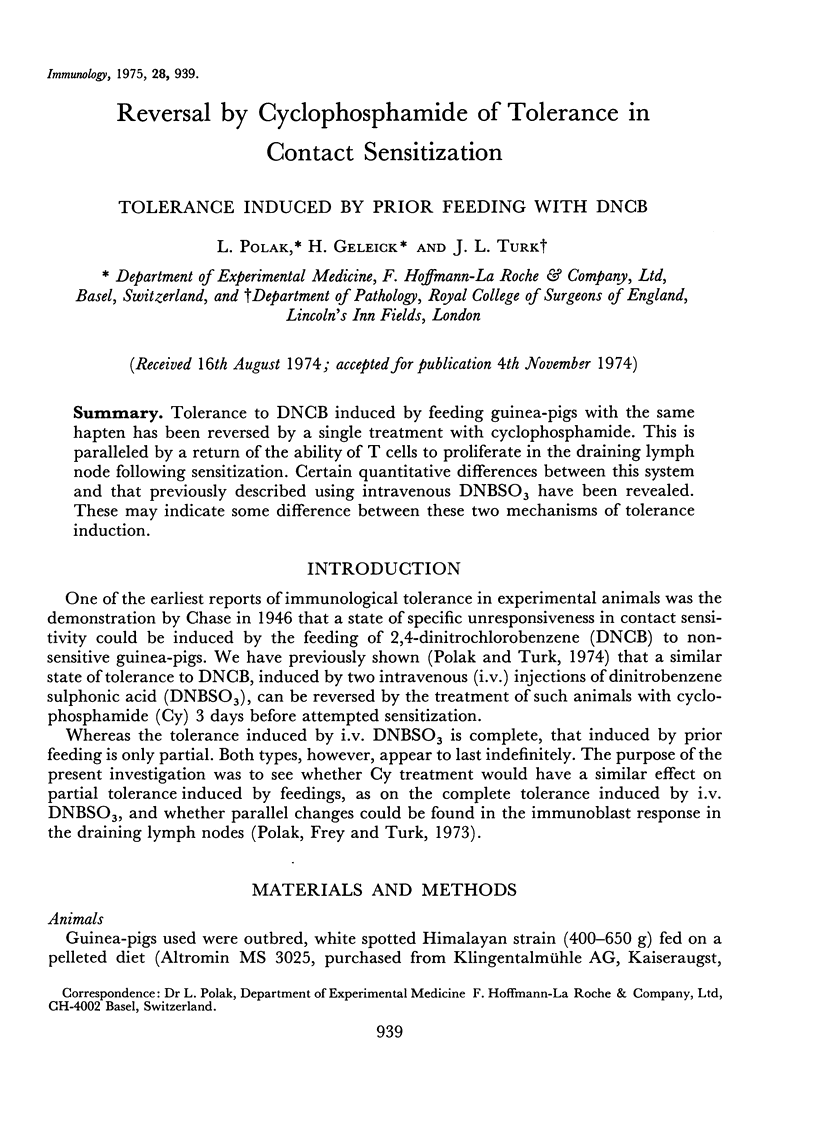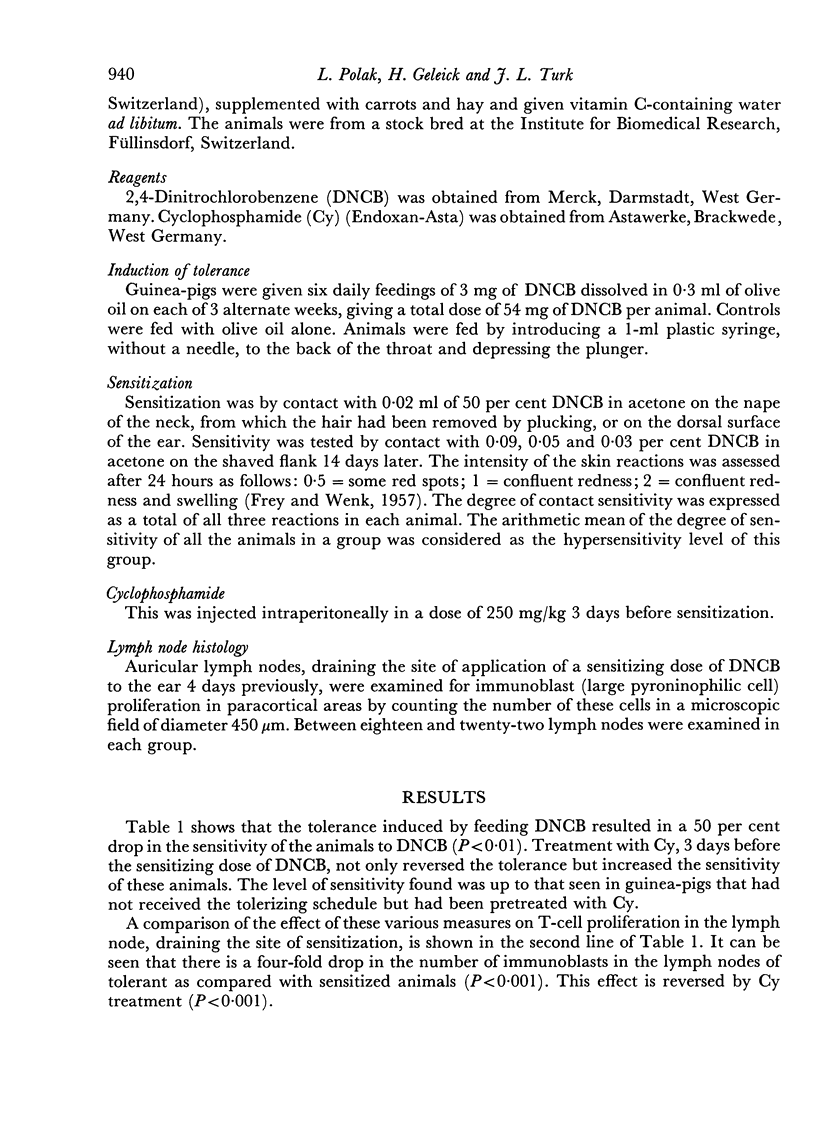Abstract
Tolerance to DNCB induced by feeding guinea-pigs with the same hapten has been reversed by a single treatment with cyclophosphamide. This is paralleled by a return of the ability of T cells to proliferate in the draining lymph node following sensitization. Certain quantitative differences between this system and that previously described using intravenous DNBSO3 have been revealed. These may indicate some difference between these two mechanisms of tolerance induction.
Full text
PDF



Selected References
These references are in PubMed. This may not be the complete list of references from this article.
- Crowle A. J., Hu C. C. Investigation of the mechanisms by whick "enhancing" antiserum prevents induction of delayed hypersensitivity to protein antigens in mice. J Allergy. 1969 Apr;43(4):209–223. doi: 10.1016/0021-8707(69)90064-1. [DOI] [PubMed] [Google Scholar]
- FREY J. R., WENK P. Experimental studies on the pathogenesis of contact eczema in the guinea-pig. Int Arch Allergy Appl Immunol. 1957;11(1-2):81–100. doi: 10.1159/000228405. [DOI] [PubMed] [Google Scholar]
- Halliday W. J., Walters B. A. The mechanism of tolerance in contact hypersensitivity to dinitrochlorobenzene in guinea-pigs. Clin Exp Immunol. 1974 Feb;16(2):203–212. [PMC free article] [PubMed] [Google Scholar]
- Medawar P. B. Tolerance reconsidered--a critical survey. Transplant Proc. 1973 Mar;5(1):7–9. [PubMed] [Google Scholar]
- Polak L., Frey J. R., Turk J. L. Dissociation between lymph node and peripheral reactivity in immunological unresponsiveness to DNCB. Immunology. 1973 Sep;25(3):451–457. [PMC free article] [PubMed] [Google Scholar]
- Polak L., Turk J. L. Reversal of immunological tolerance by cyclophosphamide through inhibition of suppressor cell activity. Nature. 1974 Jun 14;249(458):654–656. doi: 10.1038/249654a0. [DOI] [PubMed] [Google Scholar]


